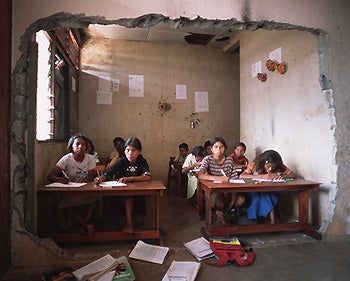
From August 2002, just months after Timor-Leste gained independence, to April 2006, I was the World Bank’s Country Manager for Timor-Leste and thus eyewitness to an unfolding state-building process. The experience affected me profoundly as a development professional. In the short time I lived in Timor-Leste, and notwithstanding daunting circumstances, I saw some agencies, in particular the Ministry of Health and the Central Bank, grow into institutions that delivered results and broadly gained the trust of the population. When community violence erupted in 2006, the Ministry of Health responded effectively, and the Ministry of Social Solidarity repurposed itself around the drawn out displacement process that followed.
My observation of this process is what inspired Institutions Taking Root, a new report that illustrates how institutions can become effective even in the most fragile of circumstances. The report looks at some public institutions that do manage to deliver results, earn legitimacy among citizens, and forge resilience. While the specific experiences of these agencies vary from country to country, learning more about the practices and policies that contribute to their success can reveal important clues about how institutions grow stronger and take root in fragile contexts.
Public agencies from Lao PDR, Sierra Leone, The Gambia and Timor-Leste are covered in the report. Each exhibited sustained and measurable improvements in key agency results. They bridged societal divides, such as urban-rural or between ethnic groups. And their results were sustained or enhanced over time, even in the face of changing leadership or external shocks.
How did these institutions achieve success? Each used strategies for effective internal management as well as tactics to navigate the broader, often shifting, sociopolitical environment in which they operate.
With a double focus on both delivering results and generating legitimacy, these organizations managed not only to become internally efficient, but also to develop the support of external constituencies. In some cases, this broad support from a range of stakeholders, including citizens, made it possible to defend results or push for implementing important reform. Interestingly, the repertoire of micro-institutional strategies these agencies deployed is remarkably uniform, even where approaches to navigating the socio-political dynamics were not.
The goal of “Institutions Taking Root” is to provide concrete, actionable insights to policymakers and development practitioners who work to build public institutions in fragile and conflict-affected countries. Please join us on Wednesday, October 29 at 12:30 pm EST for a discussion around the findings of the report, which will be livestreamed here at that time. Until then, I would welcome getting your comments or questions in advance through the form below.


Join the Conversation